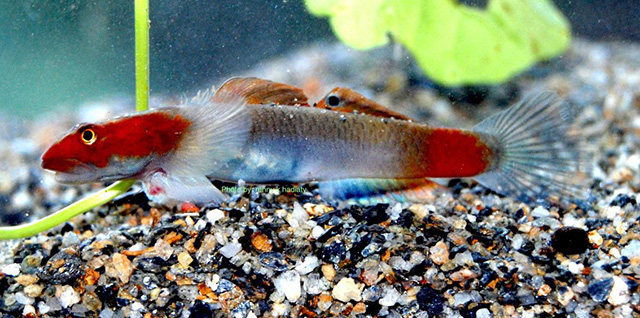| Gobiidae (Gobies), subfamily: Sicydiinae |
| 3.9 cm SL (male/unsexed); 4.63 cm SL (female) |
|
demersal; freshwater |
| Asia: Indonesia. |
|
Dorsal spines (total): 7-7; Dorsal soft rays (total): 10-10; Anal spines: 1-1; Anal soft rays: 10-10. Lentipes mekonggaensis can be diagnosed by the following characters: pectoral fin with 19-20 rays; second dorsal and anal fins I10, and 28-33 lateral scales; urogenital papilla retractable into a sheath-like groove and without lobes or other expanded tissue. Male is
characterised by few tricuspid teeth in the upper jaw (10-16), ctenoid scales on anterior body region strongly ossified, the base of the first dorsal fin not reaching the base of the second dorsal fin origin, and a specific body color, with a bright red head, a red band on caudal
peduncle and orange dorsal fins (Ref. 97410).
Description: scales in transverse backwards 11-13; scales in transverse forwards 7-12; zigzag scales 9-12 (Ref. 97410). |
| Found in a swift, clear high gradient stream with a rocky and boulder-strewn bottom
at the edge of oil palm plantation (388 m above sea level). Presumed to be amphidromous as the other members of the subfamily (Ref. 97410). |
|
Data deficient (DD); Date assessed: 05 January 2019 Ref. (130435)
|
| harmless |
Source and more info: www.fishbase.org. For personal, classroom, and other internal use only. Not for publication.

